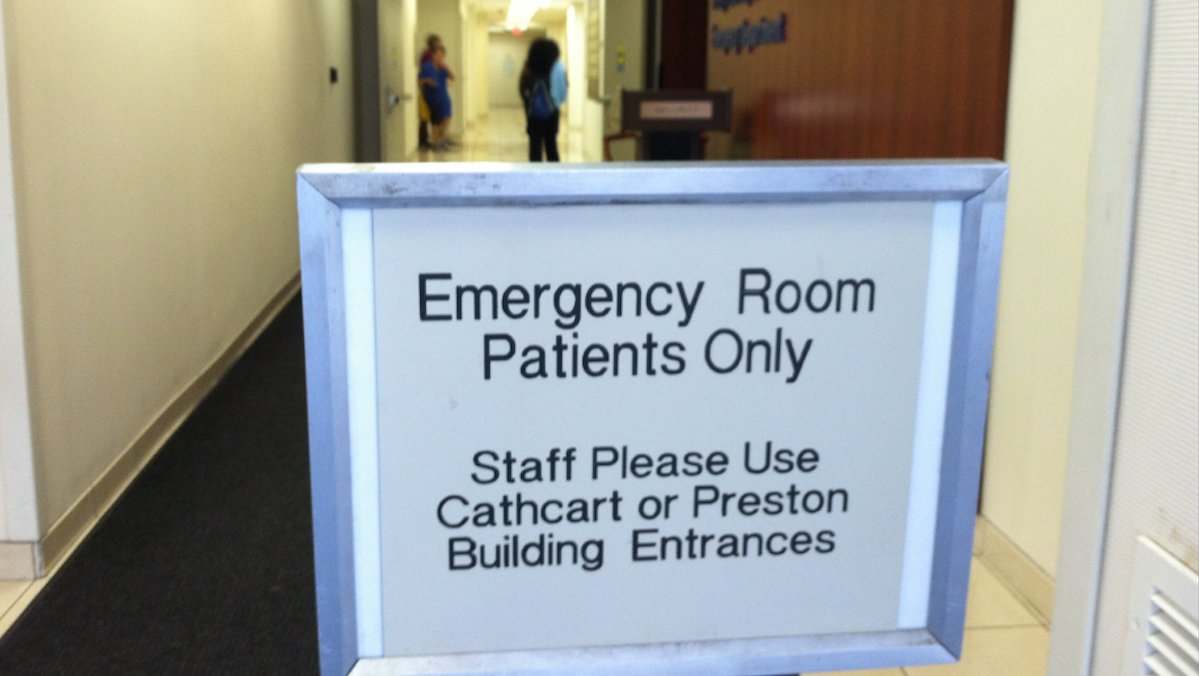Why some Philly patients prefer the ER

The study honed in on the experiences of 40 low-income patients who sought care at a University of Pennsylvania hospital in 2011. (Charlie Kaier/for NewsWorks)
Improved hospital services and a faltering primary care system may have some Philadelphia residents choosing to go to the emergency room for care instead of a doctor’s office. That’s according to a new study out of the University of Pennsylvania, published in this week’s issue Health Affairs.
The study honed in on the experiences of 40 low-income patients, some with insurance and some without, who sought care at a University of Pennsylvania hospital in 2011.
It found that most patients had opted to wait until their health conditions worsened to the point of needing emergency care. Had that patient sought preventive care at a doctor’s office, an emergency situation could have been avoided altogether, said Dr. Shreya Kangovi, a primary care physician in West Philadelphia and lead author of the study.
It’s not that patients wanted to be sick, said Kangovi, but rather the primary care system “is riddled with barriers that end up driving patients away.” What the region and nation is left with, she says, is “an inefficient way of delivering care.”
Barriers to treatment
The study found that lots of barriers to getting care at a doctor’s office from having to wait a long time for an appointment, to being referred to multiple specialists at different locations, to having added co-pays for each visit.
“Patients would rather wait to get sick and call an ambulance because it’s so difficult to arrange things like transportation,” Kangovi said.
By law, emergency rooms are required to see everyone, regardless of their ability to pay. That may seem like a cheaper, better option to patients, said Kangovi, but it’s more expensive to the system as a whole.
The federal government and insurance companies have historically reimbursed hospitals for this care, regardless of whether a patient might be better off seeking care earlier in a primary care setting. According to the study:
“Reducing avoidable hospitalizations and emergency department visits is a major target for cost control and quality improvement in the health care system … Conditions that could have been prevented or mitigated by effective ambulatory care [out-patient care] cost approximately $30.8 billion annually [nationwide]. At each stage of care, patients with low socioeconomic status are at higher risk for being hospitalized for ambulatory care–sensitive conditions than patients of higher socioeconomic status.”
Dr. Kangovi recalled speaking with a patient who had asthma. Instead of going to a doctor for medication and preventive treatment, the patient waited until the situation escalated to the point of an asthma attack, requiring emergency attention.
Broken system
These narratives come as no surprise to Dr. Jeffrey Brenner, director of the nearby Camden Coalition of Health Providers in New Jersey, who describes the primary care system as “completely broken in poor communities.”
Brenner wasn’t involved in the Kangovi’s study, but found that in his own New Jersey community where he used to operate a primary care office, patients often preferred the emergency room even in non-urgent circumstances.
The emergency room may be brighter and may be cleaner, Brenner explains. The perception is it’s “one-stop shopping. You can get everything done while you’re there.”
Brenner doesn’t put the blame solely on doctors’ offices for their shortcomings.
“That is a result of 50 years of overspending, overcapitalizing and over-investing in hospital-based care and under-investing and under-spending in outpatient care,” said Brenner. “As a result, you have two very different tiers of care and two very different tiers of service.”
Across the spectrum
Dr. Kangovi also says the challenges of navigating the primary care system aren’t unique to low-income residents, but they may be less likely to have the additional resources needed to deal with the problems.
She said she is hopeful that new models on the horizon, mainly being set up under the Affordable Care Act, will change this by rewarding hospitals and doctors for keeping patients healthy.
“Right now, we have a system where hospitals are paid when individuals get sick, oftentimes when the chance of preventative care has passed,” said Dr. Kangovi. “Given the responsibility of improving the health of a population, that will naturally make systems gravitate toward more preventive primary care. The problem right now is the system isn’t built to reward that.”
Brenner agreed but thinks it’s going to take a lot of work to turn the tide of a health system that currently comprises nearly one fifth of the U.S. economy.
“It’s like the Titanic headed for an iceberg,” said Brenner. “It may take more than the Affordable Care Act to keep it from hitting the iceberg.”
WHYY is your source for fact-based, in-depth journalism and information. As a nonprofit organization, we rely on financial support from readers like you. Please give today.

